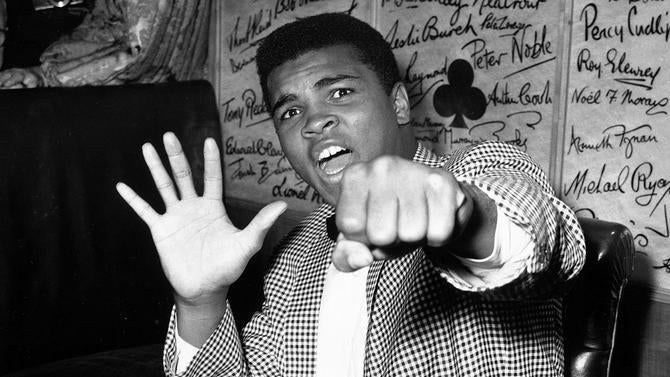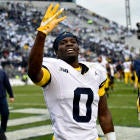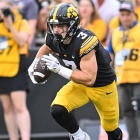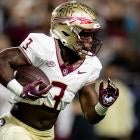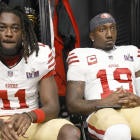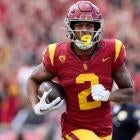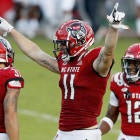In June of 1961, Muhammad Ali -- then known as Cassius Clay -- met Gorgeous George in Las Vegas.
Ali was in town to fight Duke Sabedong in a boxing match. George was in town for a pro wrestling match against Freddie Blassie. Both made the media rounds to hype up their shows and inevitably crossed paths in the process.
Ali, who passed away on June 3 at age 74, was already an Olympic gold medal-winning boxer with the talent and confidence to become the greatest to ever grace the ring. But he wanted more. He wanted to fill arenas and earn big money. He wanted to captivate people with more than just his fists and his footwork.
From the oft-derided world of pro wrestling, Ali found his missing ingredient. He needed to be arrogant, loud and clever. He needed to be mouthy, to be a compelling character. Any fan he could not infuriate with his arrogance, he wanted to amuse with his wordplay and charisma.
The idea started when Ali watched an aging, golden-era TV wrestling star work the room.
"[I got it] from seeing Gorgeous George wrestle in Las Vegas," Ali told the Associated Press' Hubert Mizel in a 1969 interview. "I saw his aides spraying deodorant in the opponents' corner to contain the smell. I also saw 13,000 full seats. I talked with Gorgeous for five minutes after the match and started being a big-mouth and a bragger.
"He told me people would come to see me get beat. Others would come to see me win. I'd get 'em coming and going."
From that point on, it wasn't just fight night. It was showtime. Especially during interviews, where Ali drew massive attention for reciting poems about his own greatness and launching into insulting tirades about his opponents. How ugly they were. How stupid they were. That was how Ali sold fights. It was just like Gorgeous George told him it would be in 1961. Some people hated Ali and some loved him, but when Ali was on the marquee, everyone showed up. To use wrestling jargon, he talked them into the building.
Muhammad Ali's interviews were straight out of the pro wrestling playbook. Thanks to Ali's incredible success and influence, it also became the blueprint for fight hype across all genres of combat sports, including boxing and mixed martial arts.
Although he got the idea from wrestling, it was up to Ali to execute on it. Not every fighter has the charisma or the charm to pull off Ali's act. Make no mistake about it: What wrestling might have innovated, Ali perfected.
Many of wrestling's biggest stars learned to connect with fans by mimicking Ali. Watch the best interviews from legends like Dusty Rhodes, Ric Flair, Superstar Billy Graham or The Rock. You might find echoes of Muhammad Ali in their words and their cadence.
As his fame grew, Ali gained advantages wrestlers could only dream of. Ali had TV time in abundance. He had magazine covers and talk show appearances. He wasn't just a star boxer, he was a star -- period. It would take until the mid-1980s before wrestling produced a star that the mainstream media cared about.
Ali never shied away from guest roles in wrestling storylines. Ali appreciated that world on a level that many athletes did not. He enjoyed the showmanship. He was comfortable enough with the absurdity and the charade of it all that he would put his own reputation on the line -- at the height of his fame, while still an active boxer -- by being at a wrestling show and getting physical.
In those days, many wrestling fans still believed what they were watching was real. For Ali to allow a wrestler to get the better of him in the ring carried potential for real-world embarrassment. A segment of the population might think less of him as a fighter.
But Ali appeared to get a kick out of it. In a way, being around wrestling was a chance for him to do the fun part -- inciting a crowd, talking trash -- while taking a break from the hard part of being the heavyweight boxing king.
Sometimes it was as simple as showing up, waving to fans, and posing for photos with someone like Lou Thesz or Andre the Giant. Sometimes, like at WWE's first WrestleMania in 1985, he played the role of guest referee. At that landmark show, the crowd at Madison Square Garden roared as Cowboy Bob Orton provoked Ali into taking a wild swing at him on the ring apron.
In the Mid-South territory in the 1980s, he once again got provoked by the bad guys -- this time Jake "The Snake" Roberts and the Barbarian -- and did several laps around the ring chasing people before landing a flurry of worked punches.
There was the time in 1995 when Ali joined a group of WCW wrestlers on a trip to North Korea -- of all places -- as the special guest for a bizarre wrestling show put together in part by his old friend, Antonio Inoki. There's making an appearance and then there's going significantly out of your way to make an appearance. The latter definitely applied to the North Korea trip.
Ali's most famous crossover with pro wrestling was his boxer vs. wrestler match against Inoki on June 26, 1976 in Tokyo. The public was immediately skeptical about whether the fight would be legit simply due to the involvement of a pro wrestler (and, to be fair, a few wrestling promoters). As it turned out, the fight was real, albeit with a long list of of restrictive rules. The result was a bizarre contest in which Inoki remained on his back kicking at Ali's legs while a frustrated Ali screamed at and taunted him.
The mainstream sports media tore up that fight for a myriad of reasons. It was boring, they said. It was fixed, they claimed. Meanwhile, Ali ended up in the hospital due to the damage inflicted on his legs by Inoki and dutifully bore his share of the criticism, standing by the authenticity of the bout.
The match was carried worldwide via closed-circuit broadcast. Wrestling promoters across the U.S. sold tickets to their own shows including live, local wrestling undercards followed by the Ali-Inoki fight via closed-circuit. Years later, closed circuit would be replaced by pay-per-view, a critical profit source for boxing, wrestling and MMA in the decades to come.
In hindsight, the attention Ali and Inoki brought to the idea of a big-money fight between fighters with mixed styles foretold the arrival of standardized MMA years later. And it all began because Ali -- one of the most famous men on the planet -- was not too proud to put his reputation on the line by involving himself in pro wrestling.
He hyped the fight by appearing on Wide World of Sports with his friend, Howard Cosell, to allow wrestler Buddy Wolfe to give him backbreakers and hip-tosses in front of a Chicago crowd. In Landover, Maryland, he let a hulking Gorilla Monsoon put him in an airplane spin while the crowd laughed and cheered. Ali even went on the Tonight Show to hype the fight, proudly bringing Blassie along for the interview.
Muhammad Ali was wise enough to borrow a good idea from Gorgeous George in 1961. From there, he used his powerful personality to innovate the art of fight hype, all while dominating the game of boxing.
In entertainment and in sports alike, he leaves a void his successors will be hard-pressed to fill.
